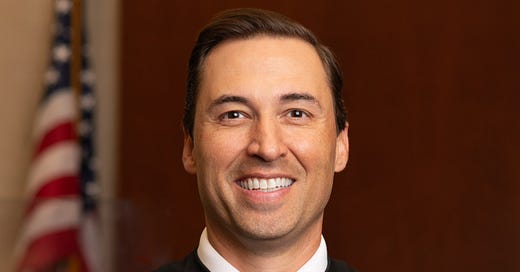Last week, the United States Court of Appeals - Fifth Judicial Circuit made a significant decision regarding the use of generative artificial intelligence in the legal profession. The Court, after receiving public comments, decided not to adopt a special rule governing the use of generative AI. This decision reinforces the principle that the existing rules and professional responsibilities are sufficient to address the challenges posed by generative AI, at this time.
In the court's decision, it emphasized that parties and counsel must adhere to their existing duties under Federal Rule of Appellate Procedure 6(b)(1)(B) and made it clear that the use of AI does not absolve attorneys of their responsibility to ensure the truthfulness and accuracy of their filings. As the court succinctly put it, "I used AI" will not be an excuse for an otherwise sanctionable offense.
This decision is a welcome development, particularly in light of the orders that were issued by several judges after the infamous hallucination case out of New York. You may recall that I wrote an open letter to all judges across the country, advocating for education over regulation, in response.
In my letter, published on November 28, I argued that an order specifically prohibiting the use of generative AI or requiring disclosure of its use is unnecessary and potentially counterproductive. The legal profession is already guided by stringent ethical standards and professional responsibilities, including ABA Model Rules of Professional Conduct 1.1, 1.6, and 3.3, which address issues of competence, confidentiality, and candor. Rule 11 of the Federal Rules of Civil Procedure, and each state equivalent, also mandate that anyone who files a pleading or motion must certify its correctness and veracity.
Introducing an AI-specific order could create confusion, given the rapid integration of AI tools into everyday legal products like Westlaw, Lexis, and Microsoft Co-Pilot. For instance, would a lawyer need to certify AI use if it was only employed to clean up paragraphs without any case citations? Moreover, the fast-paced evolution of AI technology means any specific order could quickly become outdated, limiting its practical utility.
Over-regulation might also stifle innovation and discourage the legal profession from leveraging beneficial technologies. It is crucial that lawyers retain the ability to exercise judgment in incorporating generative AI tools, adhering to our existing ethical framework. This approach fosters a balanced integration of technology, promoting innovation while upholding the core values of our profession.
The U.S. Fifth Circuit’s recent decision aligns with this perspective. By not adopting a special rule for generative AI, the Court acknowledges that our current rules are robust enough to encompass the challenges and opportunities presented by this technology. This focus on education and adaptability within the existing framework is a more effective way forward.
In closing, I want to reiterate the importance of embracing new technologies with a thoughtful approach. As I noted in my open letter, the value of AI-generated content parallels that of a first draft by a junior associate or law clerk. Ultimately, the responsibility for the accuracy of any filing rests with the attorney. By promoting education over regulation, we can ensure that the legal profession continues to innovate while maintaining the highest standards of integrity and professionalism.
For more posts like this one, visit: JudgeSchlegel.com
![[sch]Legal Tech](https://substackcdn.com/image/fetch/$s_!tpbI!,w_80,h_80,c_fill,f_auto,q_auto:good,fl_progressive:steep,g_auto/https%3A%2F%2Fbucketeer-e05bbc84-baa3-437e-9518-adb32be77984.s3.amazonaws.com%2Fpublic%2Fimages%2Feb714602-b05a-4e7a-96ee-e66eefa09112_1280x1280.png)

![[sch]Legal Tech](https://substackcdn.com/image/fetch/$s_!tpbI!,w_36,h_36,c_fill,f_auto,q_auto:good,fl_progressive:steep,g_auto/https%3A%2F%2Fbucketeer-e05bbc84-baa3-437e-9518-adb32be77984.s3.amazonaws.com%2Fpublic%2Fimages%2Feb714602-b05a-4e7a-96ee-e66eefa09112_1280x1280.png)

I agree 100% with the Fifth Circuit decision and your commentary, Judge Schlegel.